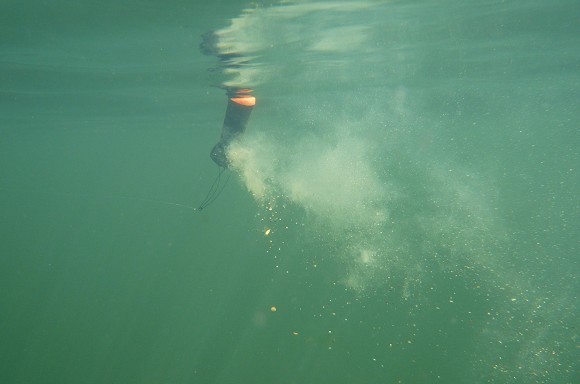
Does a crosswind affect our baiting?
CARPology’s resident diver and top angler, Rob Hughes answers another CARPology.net reader’s question…
Question: does a crosswind affect our baiting?
“On large lakes, Horseshoe for example, when there’s a big wind blowing left to right how much does the bait move through the water? When you are spodding at said range, is it dispersing over a wide area or is it dropping straight down?” Dennis, via Facebook
Rob Hughes "After casting in the correct spot, there are three major things that influence the spread of bait in both windy and calm conditions. Primarily it’s the size and weight of the bait you are using. Boilies will drop straight down pretty quickly, pellets spread a bit wider, particles like hemp a little wider still, whilst groundbait will just stay suspended in the water. The underwater tow that most people think is responsible for their bait spreading about is negligible when compared with these other factors. What is significantly more important is the surface drift on the spod and the speed that it empties itself.
"For our test, Josh used a ‘standard’ spod mix of pellets boilies with some hemp and also some groundbait to stodge it up; a mix many of us regularly use. I waited in the water about 90yds out watching the spod and taking snaps as it hit the water next to me and discharged its contents, while Josh gave it a moment before giving it a few twitches and reeling it in. What became apparent very, very quickly was that the spod was discharging too slowly and the surface drift meant that by the time it had fully emptied there was bait all over the place as the spod had moved a considerable distance.
"The spod used was tapered strongly with a narrow neck and holes in the body. This meant that the water couldn’t get in fast enough to flush it out before the surface drift had started to move it, creating a line of bait rather than one dump. It would be fine for boilies alone but not for stodgy spod mix. From the bank it looked like the spod was only moving a short distance but in the water it was drifting up to 10 or 12ft before fully discharging thus spreading the bait around quite a lot. Upon diving down to look at it on the bottom (13ft deep) there were patches of boilies, patches of pellets and thin scatterings of hemp and corn, but the spread was caused more by the surface drift than the undertow.
"In windy conditions therefore it is important to use a spod that will discharge quickly so a wider necked one would be the best choice. Additionally, if you are using stodge then more holes in the spod will flush it out quicker. Though by far the best solution is to do your spodding when it’s calm."





